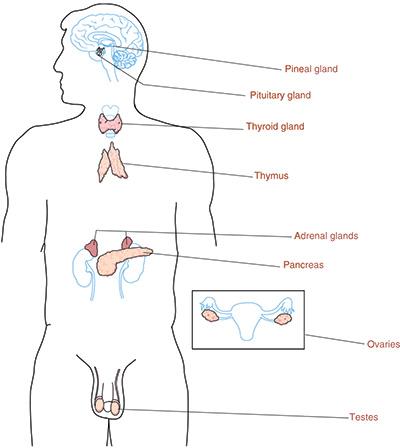
Learn to Code: Diabetes Mellitus
ICD-10-CM; diabetes

5 min read
Did you know? April is Defeat Diabetes Month. Read more to learn about this chronic condition, its complications, and how it is categorized in ICD-10-CM.
What Is Diabetes Mellitus?

Diabetes mellitus is a chronic condition of the endocrine system. The pancreas is an organ in the endocrine system that lies near the bottom of the stomach, and it performs both endocrine and digestive functions. It secretes the hormones insulin and glucagon, which are important in regulating blood glucose levels (glucose is the body’s main source of energy). Diabetes mellitus is caused by either an absolute decrease in the amount of insulin secreted by the pancreas or a reduction in the biologic effectiveness of the insulin secreted. Essentially, when the body is unable to process insulin, glucose levels in the blood rise and lead to symptoms such as increased urination, excessive thirst, and weight loss. According to the American Diabetes Association, 3.84 million Americans had diabetes in 2021. Additionally, it causes more deaths per year than breast cancer and AIDS combined.
Although there are other conditions that include the term “diabetes,” such as bronze diabetes and diabetes insipidus, a diagnosis of diabetes without further qualification should be interpreted as diabetes mellitus.
How Many Types of Diabetes Are There?
There are three major types of diabetes mellitus: type 1 (or type I); type 2 (or type II); and secondary, meaning the diabetes is due to an underlying condition or induced by a drug or chemical.
Type 1 Diabetes Mellitus
Type 1 diabetes mellitus is characterized by the body’s failure to produce insulin at all or by an absolute decrease in such production. Type 1 diabetes may also be described as ketosis prone, juvenile type, juvenile onset, or juvenile diabetes. Type 1 diabetes may be diagnosed before the onset of symptoms. The presence of diabetes-related islet autoantibodies indicates the immune system has started to attack insulin-producing beta cells and increases the risk of developing symptomatic type 1 diabetes.
Type 2 Diabetes Mellitus

With type 2 diabetes mellitus, the body does produce insulin, but either it is produced in insufficient quantity, or the body is unable to utilize it adequately. Individuals with type 2 diabetes usually do not require insulin; diabetes is ordinarily managed with oral hypoglycemic agents, diet, and exercise.
Secondary Diabetes Mellitus
Secondary diabetes is always caused by another condition or event. It may be due to an underlying condition, drug or chemically induced, due to an infection, or the result of therapy. It may be some other specified type of diabetes. It can also be the result of an adverse effect of correctly administered medications, the result of poisoning, or a late effect of using certain medications.
How Is Diabetes Categorized in ICD-10-CM?
Diabetes mellitus is classified in categories E08 through E13 in chapter 4 of ICD-10-CM, endocrine, nutritional, and metabolic diseases. It is the condition coding professionals encounter most when working with chapter 4. Diabetes mellitus has two classification axes: the first axis is the type of diabetes, and the fourth character identifies any associated complication. The essential element in the selection of the codes in categories E08-E13 is the type of diabetes, not whether the patient is on insulin.
The ICD-10-CM classification presumes a causal relationship between diabetes and several acute and chronic conditions. When the coding professional is unable to determine whether a condition is related to diabetes mellitus, or the ICD-10-CM classification does not provide coding instruction, it is appropriate to query the physician for clarification so that the appropriate codes may be reported.
What Are the Complications of Diabetes?
Patients with diabetes mellitus are susceptible to various chronic conditions that affect the renal, nervous, and peripheral vascular systems, particularly in the feet and the eyes. Patients with diabetes often have several complications currently, and coding professionals may use as many codes as necessary to identify all the conditions related to diabetes that a patient is experiencing. Sequencing of the diabetes mellitus and the complication or manifestation is based on the reason for a particular encounter.
What About Gestational Diabetes?

A diagnosis of gestational diabetes refers to abnormal glucose tolerance that appears during pregnancy in a woman who was not previously diabetic. Gestational diabetes mellitus is not true diabetes mellitus. It can occur during the second and third trimesters of pregnancy and is thought to be due to metabolic or hormonal changes that occur during pregnancy. Gestational diabetes can cause complications in pregnancy similar to those of pre-existing diabetes mellitus. No other code from category O24 should be used with a code from subcategory O24.4.
Conclusion
Diabetes mellitus is a chronic condition that can be managed. For more information about defeating diabetes, please visit the Defeat Diabetes Foundation’s website. For more detailed information about how to code diabetes mellitus, please read chapter 14 of the ICD-10-CM and ICD-10-PCS Coding Handbook or look up content published in Coding Clinic on our enhanced search.
Resources
- Homepage. Defeat Diabetes Foundation. (n.d.) https://defeatdiabetes.org/
- Statistics About Diabetes. American Diabetes Association. (n.d.) https://diabetes.org/about-diabetes/statistics/about-diabetes
- AAPC (2024). Fundamentals of Medicine Training Textbook (3rd ed.). American Academy Holdings. https://aapc.vitalsource.com/books/A25BDI0013
- April is Defeat Diabetes Month. Terros Health. (n.d.) https://www.terroshealth.org/april-is-defeat-diabetes-month/
- AHA Central Office (2024). ICD-10-CM and ICD-10-PCS Coding Handbook, With Answers (2025 ed.).
